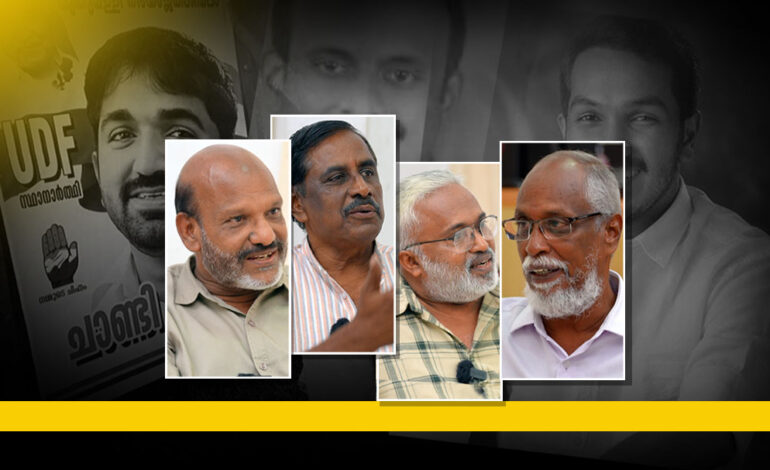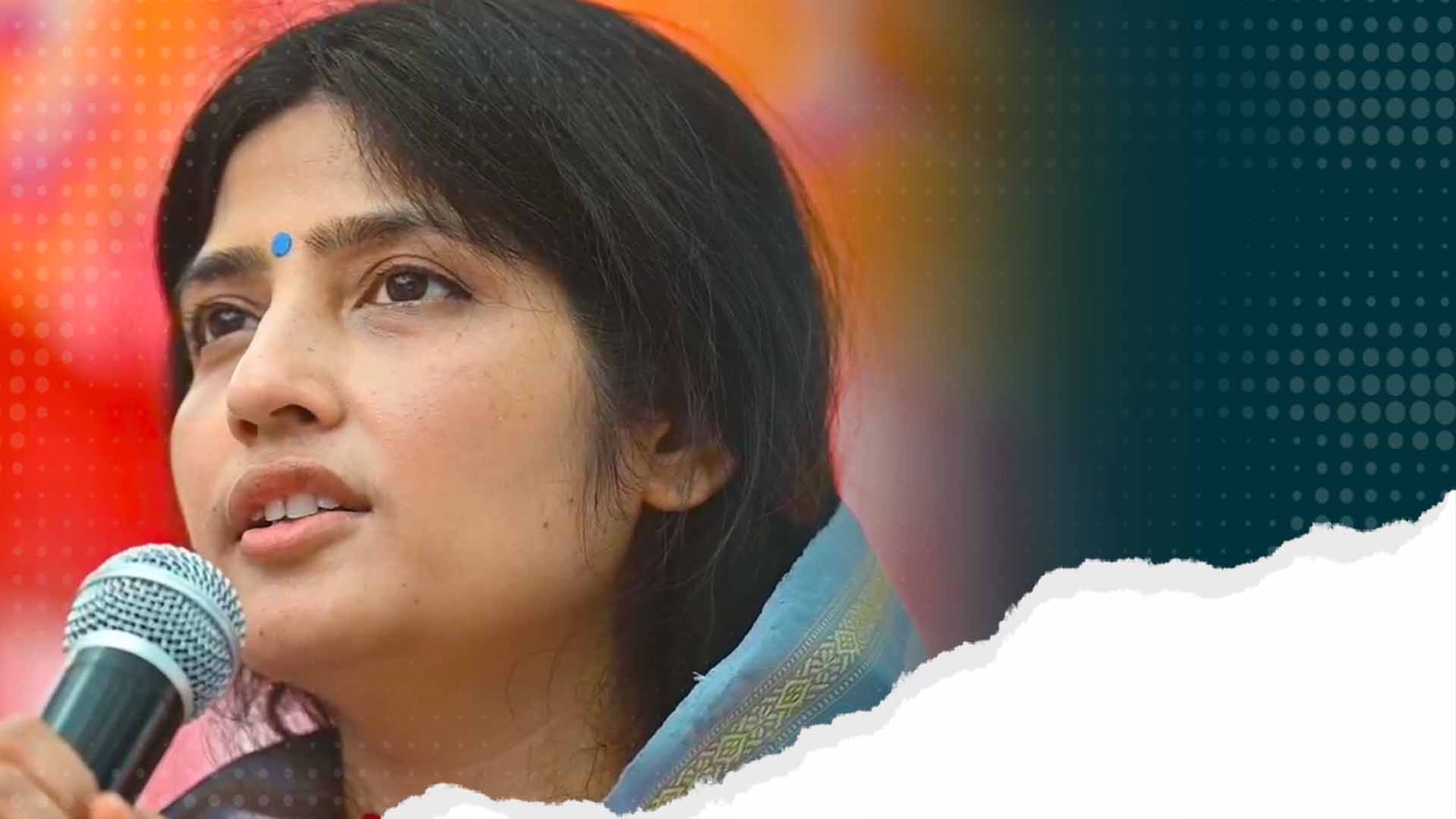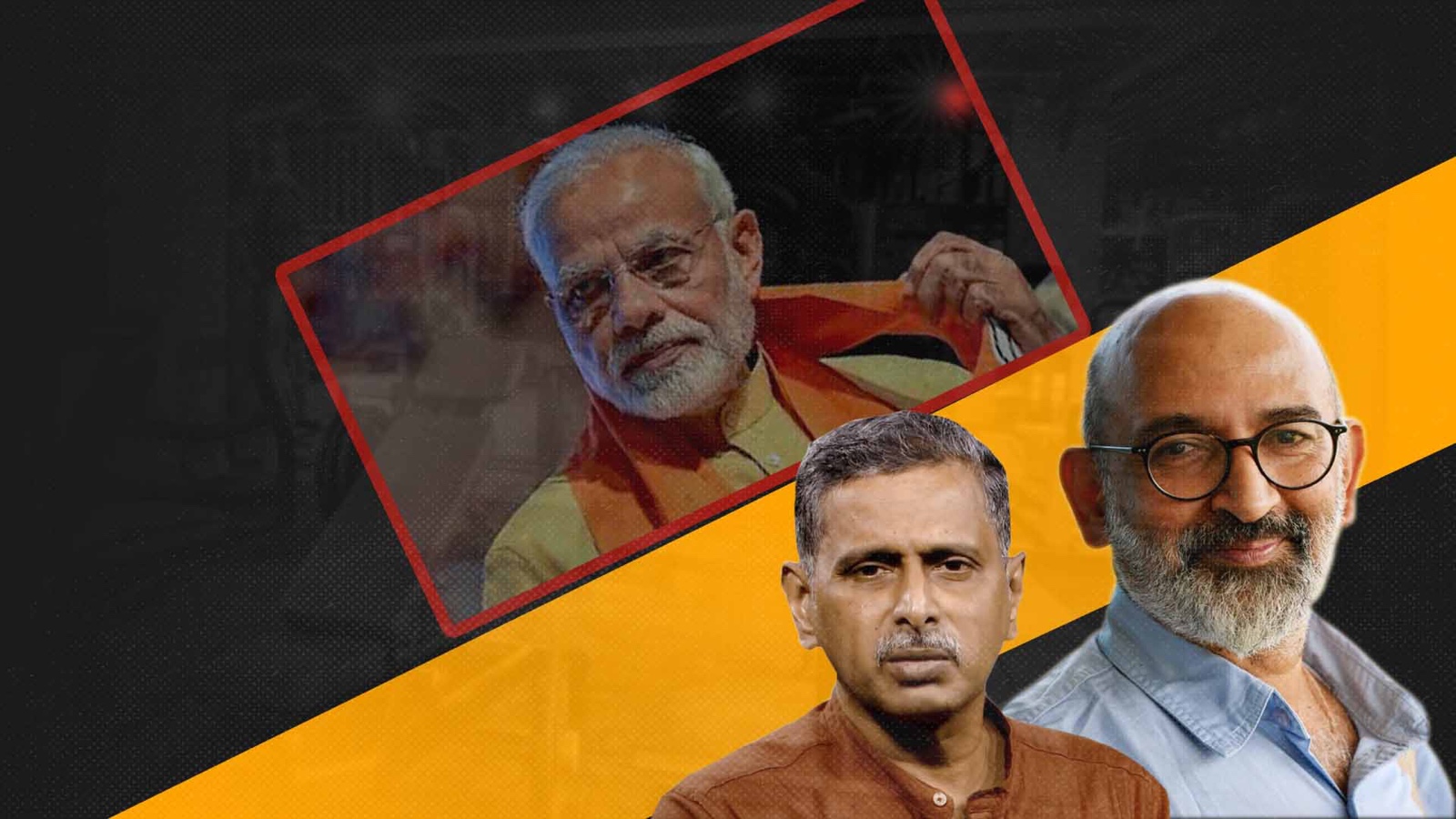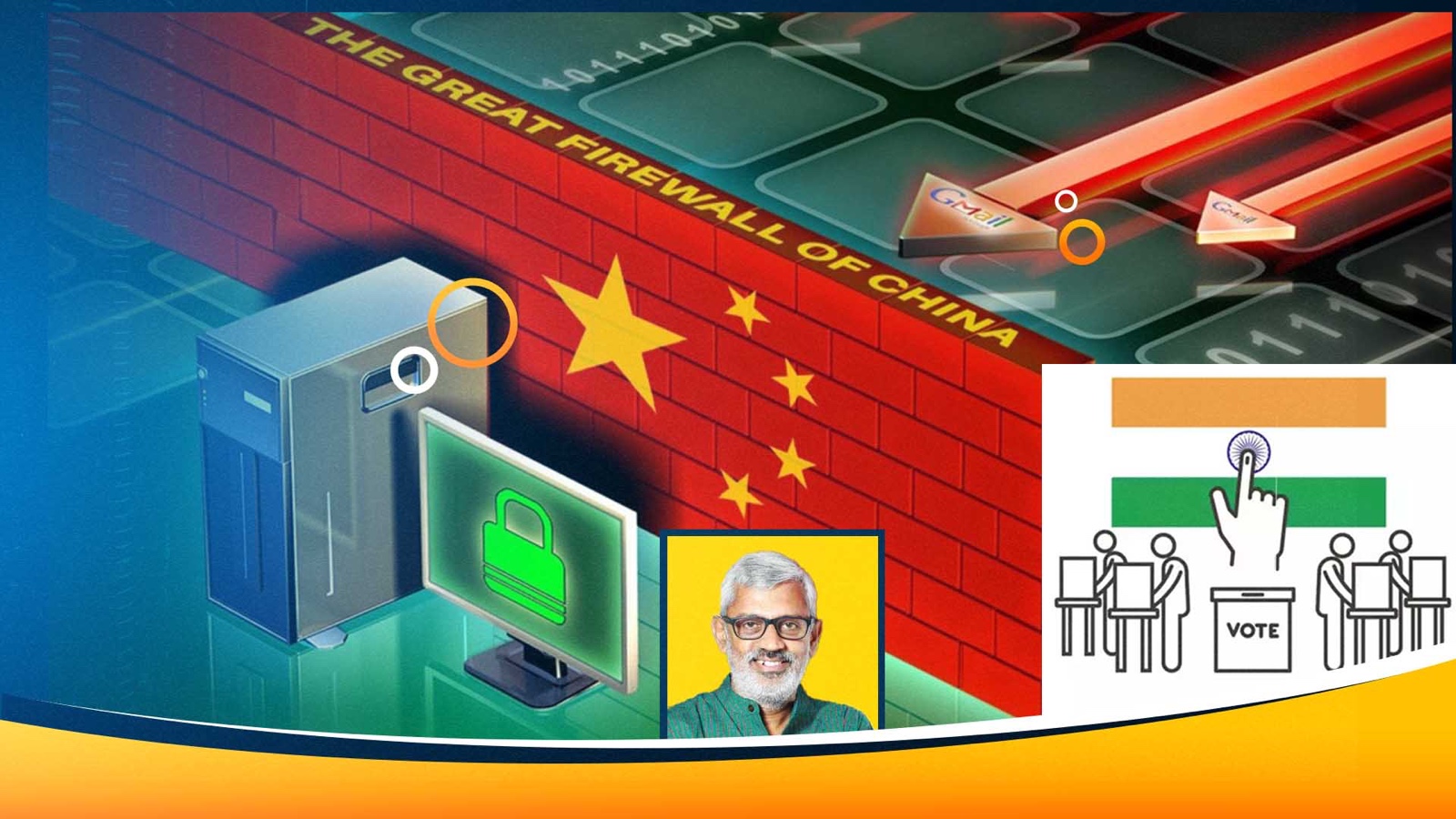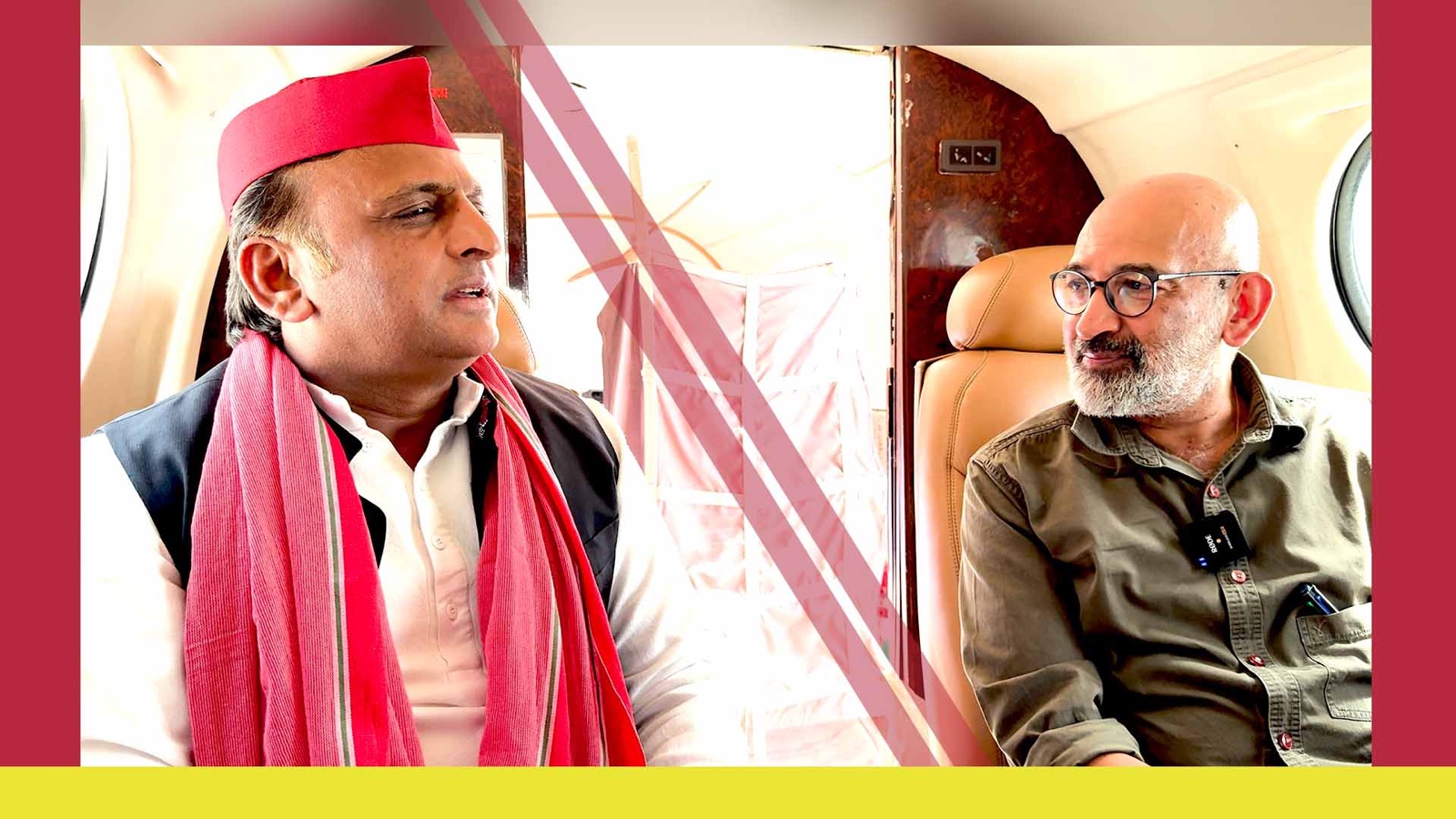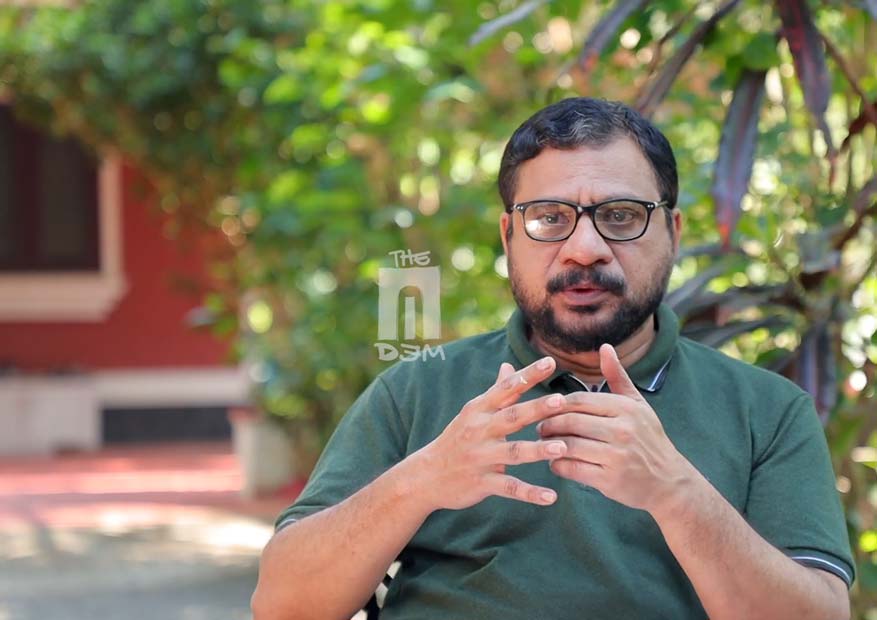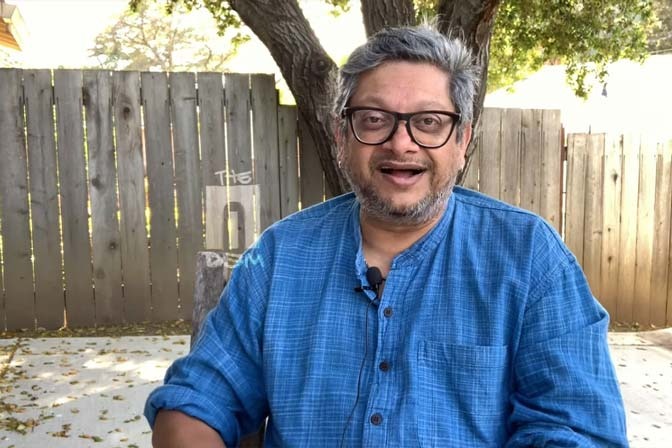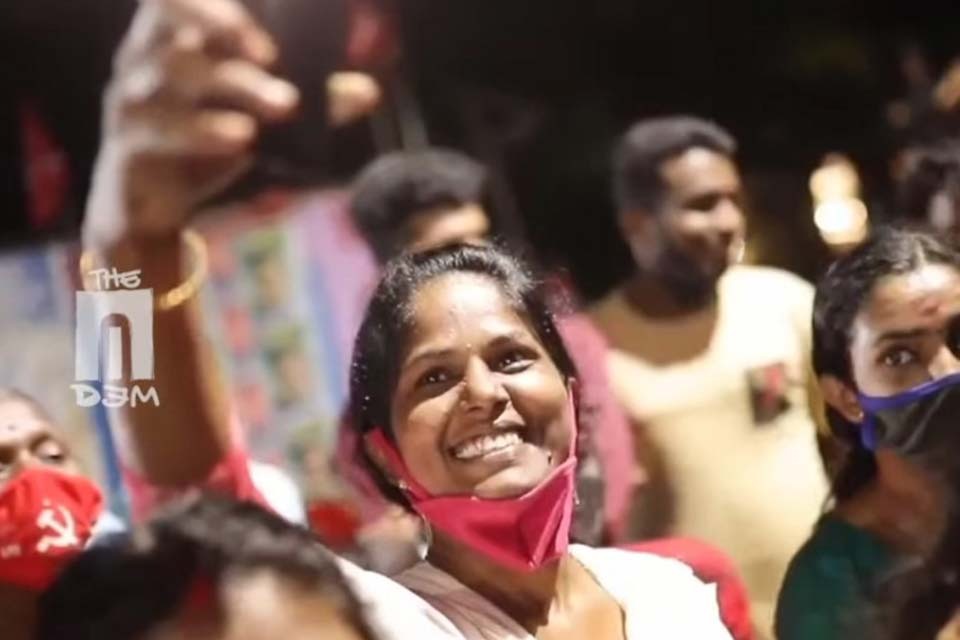The Grim Reality Behind Pomp and Rhetoric
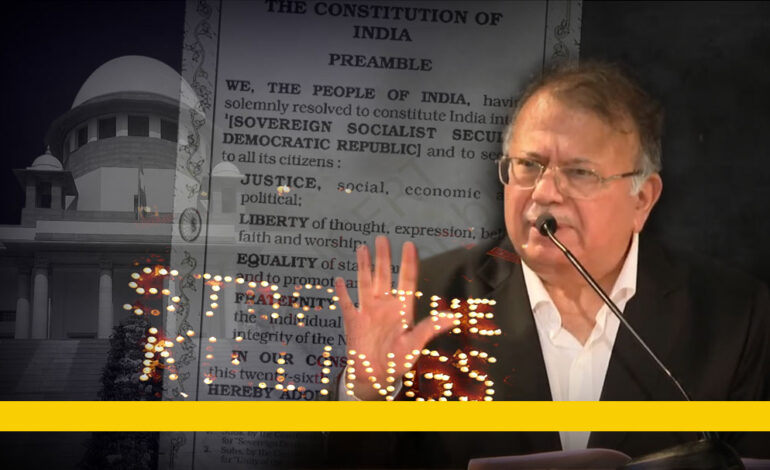
This is the full text of the 25th DS Borker Memorial Lecture delivered by Justice AP Shah at the India International Centre, New Delhi on 24 August 2023. DS Borker was a distinguished civil servant in whose memory the DS Borker Memorial Lecture Series on “My Vision of India: 2047” has been instituted. Justice AP Shah is the former Chief Justice of the Delhi High Court and former Chairman of the 20th Law Commission of India.
Good evening, everyone. Thank you for being here, and thanks also to the Borker family for inviting me to deliver the Borker Memorial Lecture. Shri D.S. Borker was a distinguished civil servant and public educator who was always focused on the future, and especially the youth of our country. It is an honour to be here to celebrate the legacy of a visionary like Shri Borker, and also push ourselves to think more like him, for what lies ahead for India.

Fittingly, the Borker Memorial Lecture is forward looking, and asks speakers to speak on one subject only, that is, “My Vision for India: 2047 AD”. This topic asks a question which is at once deeply personal and deeply political. It asks me what MY vision is, but also what my vision is FOR India. Addressing this in any meaningful way requires engaging with the past, present and the future all at once.
Glimpse of the Current Crisis
2023 is a particularly interesting year for this discussion. India is over 75 years into life as a constitutional democracy, and enough markers – social, political, economic – exist to examine whether our constitutional promises have been sufficiently secured and upheld for all our people.
There are certain things about this country I am extremely proud of, such as the transformative contributions made in the fields of science and technology, whether it is space science, or IT, or even the growth in infrastructure over the past 30 years especially. Like millions of Indians, my wife and I cried with joy when Chandrayaan-3 landed on the moon. I remember our science teacher in school, a sort of dreamer, who showed us the world beyond the skies, introducing us to NASA, and the Indian space projects led by Bhabha and Sarabhai. Yesterday’s moon landing was an emotional moment for all of us. But I am deeply troubled by many other things. If you look deeper, it seems to me that India’s society and institutions are in a state of unprecedented disruption, in fact, a crisis. Some argue that democracy here is dying a slow death.
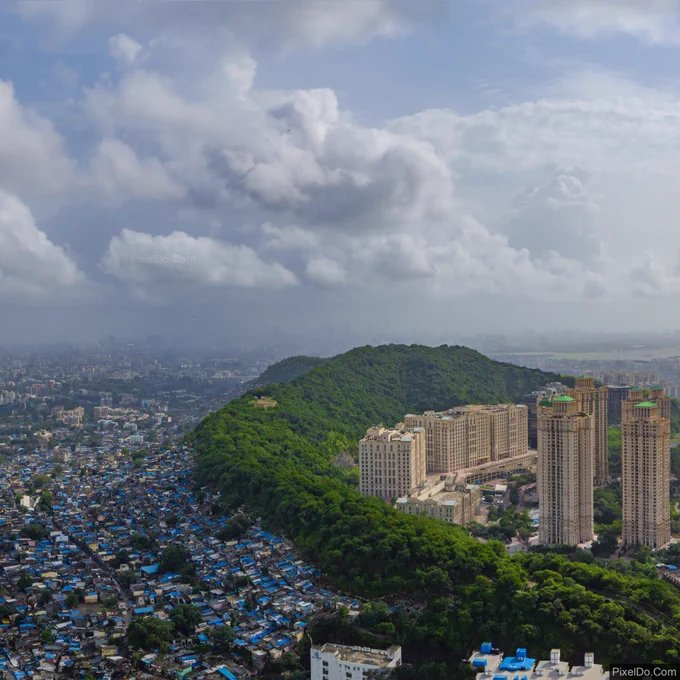
Democratic principles have not been directly or explicitly subverted, but in the past decade, democratic institutions and accountability mechanisms have been neutralised or compromised. There has been an insidious harvesting of a culture of hate, leading to active theatres of violence. Polarisation is unrestrained, vilifying minorities, with the majority being made to think of the other, especially Muslims, as the enemy, whether in Haridwar or Haryana or elsewhere. A general sentiment of hatred of minorities can be heard, seen and felt across the country.
But how did we reach here? How did we manage to get it so wrong?
Philosophers, politicians, public intellectuals remind us that where we are today is usually because we have forgotten the past. The philosopher Santayana had said, “Those who cannot remember the past are condemned to repeat it”. Similarly, Churchill wrote that “those that failed to learn from history are doomed to repeat it”.
In the same spirit, asking what one’s vision for India is requires considering what the idea of India was in the first place.
Backdrop to the Making of the Constitution
In 1947, the social, political, cultural scene was as crowded and as messy as you would imagine it to be. India’s nationalist movement was born in a melting pot of shifting cultural values and increasing pressures for social and political change, where thinkers set out to define their idea of free India, and find their meaning of nationalism.
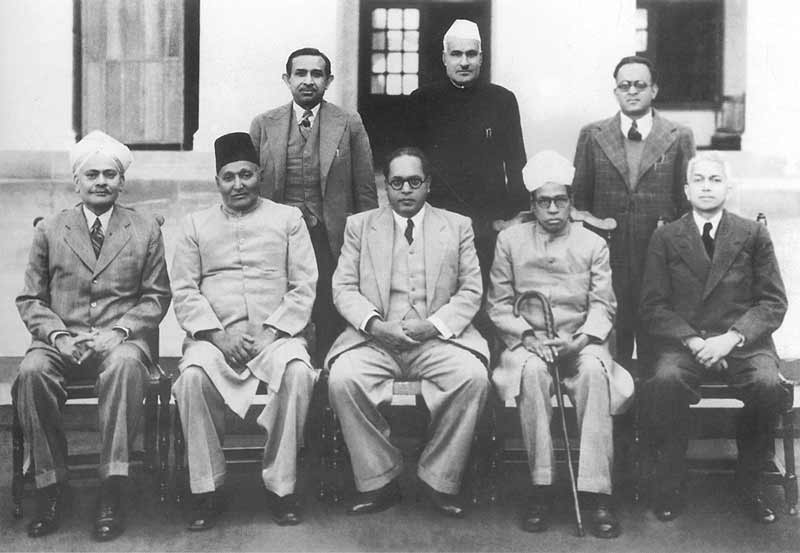
The word “nationalism” encompasses many meanings – it can mean progressive, revolutionary, pro-people, or even regressive or jingoistic nationalism. Hitler’s nationalism, while different from Gandhi’s, was a kind of nationalism, nevertheless. But we can safely say that the Indian concept of nationalism emerged in opposition to the imperialist British state, an “anti-colonial” nationalism, where identity was not tied to religion, caste, or language, but to a unified demand for freedom.
Efforts to define free India tried to assimilate positive aspects of Western and Indian traditions. Notably, thinkers like Vivekananda, Tagore and Aurobindo, besides Gandhi, of course, in their own ways, arrived at ideas of free India, responding to a dynamic socio-cultural milieu, and a frenetic pace of political change.
Vivekananda, for instance, said:
“Several dangers are in the way and one is that of the extreme conception that we are the people in the world. With all my love for India and with all my patriotism, and veneration for the ancients, I cannot but think that we have to learn many things from other nations. We must be always ready to sit at the feet of all, for mark you, every one can teach us great lessons.”
Tagore’s concern was “The suddenness with which we stepped … into another [era] with its new meaning and values!”, and that, “there was still no deep awareness of human rights, human dignity, class equality”. For Aurobindo, “Liberty and equality” were “watchwords of humanity,” which could “[remould] nations and Governments.”
These thinkers exhibit consistent motifs of what free India must strive for – social and political freedoms, equality, fraternity, and dignity… They also recognised certain obstacles that lay in wait, such as orthodoxy and superstition, leading to discriminations like untouchability.
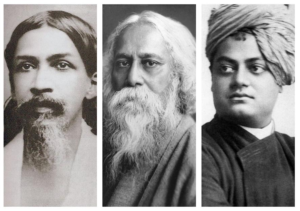
At the same time, Hindu revivalists relied on an imagined glorious Indian past as the template for its future. I must mention as an aside that my grandfather was the President of the Hindu Mahasabha in the 1940s. The earliest literature I read as a young boy in school was Savarkar, when I fell in love with his initial poetry, though his later poems became highly sanskritised and tedious to read. Savarkar’s poetry was one of my subjects in graduation.
Savarkar envisaged a nation under Hindu rule, a Hindu Rashtra, in Akhand Bharat (a United India). It was premised on the belief that only Hindus can claim India’s territory as the land of their ancestry, pitru bhoomi, and of their religion, punya bhoomi. Muslims and Christians are foreigners, for they are not indigenous and their religion originated in a separate land. Later, MS Golwalkar wrote, “the foreign races in Hindusthan … must lose their separate existence to merge in the Hindu race, or may stay in the country, only subordinated to the Hindu Nation, claiming nothing, deserving no privileges, far less any preferential treatment – not even citizens’ rights.”
Hindutva forces were generally suspicious of secular ideas. Instead, Savarkar justified Hitler’s treatment of Jews, and Moonje even met Mussolini in Italy. But such ideas were at best marginal in the independence movement.
Tryst with Destiny: The Peremptory Values emerging from the Constitution
Against this background, the Constituent Assembly started to write a Constitution to serve multitudes of people. It chose an inclusive path, not just for moral, but also practical reasons. This path ensured India could transition to a nation where diverse groups peacefully coexisted.
Note that India and Pakistan made contrarian ideological choices in 1947, and we consciously rejected a religious state. Vallabhbhai Patel, in a letter of 1947, famously wrote, it would not be “possible to consider Hindustan as a Hindu state with Hinduism as the State religion. We must not forget that there are other minorities whose protection is our primary responsibility. The State must exist for all irrespective of caste or creed.”
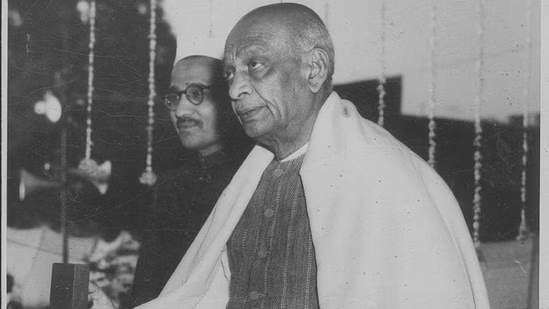
Our Constitution makers thus chose a republican form of democracy to bring together a multi-cultural society, where diversity could breathe and thrive. But there were two expectations, each from the state and people. The state, especially its enforcement wing, had to shed its colonial habits (of treating the citizen always as a servile subject). And minority faith communities had to become assured of their wellbeing in society and not be inward-looking, dependent in turn on a majority not unleashing majoritarian impulses, to slowly foster fraternal relations with each other – and together arrive at a path to social democracy.
The Constitution was firmly secular and egalitarian, declaring that “the state shall not discriminate against any citizen on grounds only of religion, race, caste, sex, place of birth, or any of them.”
The Constituent Assembly dwelt upon the idea of secularism considerably. H.V. Kamath proposed that the Preamble begin with, “In the name of God”, but many opposed this. Hridaynath Kunzru said that invoking the name of God was inconsistent with the freedom of religion and was instead reflective of a “narrow, sectarian spirit”.
The Constituent Assembly, incidentally comprising an over 80% Hindu majority, embedded secularism in the Constitution in multiple ways, through fundamental rights protecting religious freedoms, through a judiciary that would arbiter religious concerns, and through an Indian model of secularism, distinct from the western church-state model, respecting religious diversity, and promoting tolerance and plurality.
The Constituent Assembly also factored in the great deprivation facing India’s poor, illiterate, and highly under-nourished, for whom the Directive Principles framework was created, with a range of economic and social rights, and mandating the State to abide with them wholly.
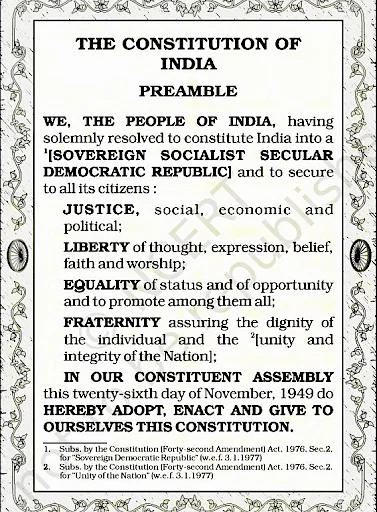
Closely connected to this was the stark social and economic inequality in the country. Ambedkar understood this well. To him, a healthy democracy meant more than just an independent judiciary or a free and fair electoral process. With great foresight, he cautioned the Constituent Assembly that political democracy would be inadequate if inequalities remained. In 1949, he said, “On the 26th of January 1950, we are going to enter into a life of contradictions. In politics we will have equality and in social and economic life we will have inequality. In politics we will be recognising the principle of one man one vote and one vote one value. In our social and economic life, we shall, by reason of our social and economic structure, continue to deny the principle of one man one value. How long shall we continue to live this life of contradictions? How long shall we continue to deny equality in our social and economic life? If we continue to deny it for long, we will do so only by putting our political democracy in peril. We must remove this contradiction at the earliest possible moment or else those who suffer from inequality will blow up the structure of political democracy which this Assembly has so laboriously built up.”
He also said that in order to “maintain democracy, not merely in form, but also in fact”, we needed to “make our political democracy a social democracy as well”. He further said, “Without equality, liberty would produce the supremacy of the few over the many. Equality without liberty would kill individual initiative. Without fraternity, liberty and equality could not pick up a natural course of things.”
Arguably, India today celebrates at best only a political democracy. We forget the other dimensions of the true democracy Ambedkar had hoped India would have, of economic and social democracy.
Ambedkar was also deeply wedded to the idea of a democratic state run on the basis of morality. Without morality, he believed, the state would be reduced to anarchy. This is how Courts have also developed the concept of “constitutional morality”, that is, to respect and abide by what is contained in the Constitution in spirit and not merely in letter.
Missed Years: Failed Constitutional Promises
The Indian experiment did not get off to a great start. The Constitution was only a map to secure an equal and prosperous future for all. India still needed to ‘build the Nation’. Certainly, power structures have been irreversibly pushed towards inclusiveness. But some complacency has also allowed the extremist Right-wing to inch into governance and everyday life.
Let’s begin with how political power has widened. Undoubtedly, the Mandal agitation, and regional parties have secured greater participation of Dalits and other oppressed castes in politics, in states and at the Centre. Constitutional amendments have helped decentralise governance structures at grassroots levels, and introduced mandatory Panchayat and Nagar Mahapalika elections, with reservations for women and SCs/STs. Implementation may be imperfect, but neglected segments that form society’s majority – women, oppressed castes – have gained political voice and decision-making authority, fundamentally altering power structures.
India also inherited a strong culture of people’s movements from the freedom struggle. Many from the earlier generations, Midnight’s children as they are sometimes called, committed themselves to the nation-building project. Mass movements – the MKSS, Narmada Bachao Andolan, the Chipko movement, the various movements around women’s rights – effectively impacted law and policy-making towards people’s rights. Examples are the Panchayat Extension to Scheduled Areas (PESA) Act, the Right to Information, food security laws, the Right to Education, MNREGA, mid-day meal schemes, the Forest Rights Act. Again, implementation may be imperfect, but these are hopefully here to stay. Every political party has had to acknowledge that for the Indian state to remain legitimate, social welfare is a must. However, these guarantees are also being chipped away, which should be of grave concern to us.
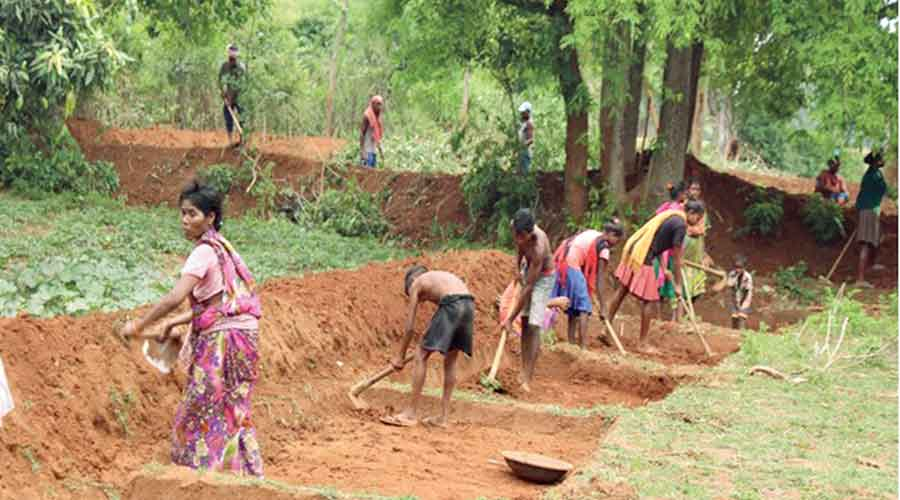
Ultimately, India is a story of deep contradictions. A middle class has grown, but most of our population remains vulnerable, with basic public goods being mostly deficient, like education, health, livelihood, employment, or a clean environment. India’s human development indicators are languishing barely higher than that of sub-saharan Africa. While rhetoric and propaganda over the decades may have swayed us, in truth, as economist Ashoka Mody has pointed out, every Indian government, from Nehru to Modi, has failed this country on delivering basic public goods. Unless this is reversed, he says, “India faces a future of mass unemployment with consequent discontent and even, perhaps, social violence.”
This has led to a precipitating fall in public trust for formal institutions – courts, parliament, police, and civilian bureaucracy. It started with Emergency years, which were unquestionably the Dark Ages for India. This was when the Indian playbook for authoritarianism was first written, a terrifying trailer for times to come. Amity in society deteriorated, and fissures along religious and caste lines deepened.
Now, I see the rise of an illiberal and communal forces in India, that is made possible, in part, by disillusionment with successive governments. This is compounded by a legal architecture that is permissive of abuse, and prejudices inherent in the society.
The Rise of the Right Wing
This worrying resurgence of communalism, a deeply divisive form of religious nationalism, has powerful political backing, seeking to realise Sarvakar’s ideal “Hindu Rashtra, Hindu Jati (race) and Hindu Sanskriti.”
As a thought exercise, though, let us test Savarkar’s theory. He believed that those whose sacred sites lie outside India’s geographical limits cannot be Indian or would be lesser citizens. Thus, Muslims and Christians would be foreigners, not indigenous to India, because their religion originated elsewhere. By corollary, then, as Rajmohan Gandhi in a previous Borker lecture explained, the millions of Hindus who live outside India cannot be Americans, or South Africans, or Fijian. ALL Indians abroad would be second-class citizens there. By extension, ALL Christians and Muslims living outside their Holy Lands would be suspect too. That the Savarkar vision is outrageously outdated is putting it mildly. People are not defined by geography or religion, just as democratic nations are not chambers of rigid uniformity or isolation.
Nevertheless, this clamorous view is being propounded in India today still, to a point where minorities are living lives in fear, and with some truth, that their citizenship has been reduced to second class existence. Incidents like those that took place in Nuh and even in Delhi, perpetuate this feeling.
Extrajudicial tools like encounter killings, panchayat bans on traders from minority communities, and ‘bulldozer politics’ have exacerbated this situation. This last situation is something that particularly troubles me. The bulldozer today has become a symbol of power, that is wielded without legal sanction or authority. Innocent lives and livelihoods are lost, with no respite in sight. It involves the physical demolition of homes on the mere suspicion that “maybe someone living there has participated in riots or indulged in some form of criminal violence or activity”. Beyond the act of demolition, there are devastating consequences for entire families and communities. Who will help them re-build their destroyed lives – not just their homes? Does the state realise the grave implications of its machismo display?
Those responsible for maintaining the rule of law, like courts, remain silent spectators. If I am not mistaken, there has not been a single case where innocent victims have found justice. When, occasionally, a bench, like in the Punjab and Haryana High Court, suo moto questions the strong arm of the state, the case itself is taken away.
The same story has played out in the case of hate speeches as well. Politicians and politically-backed media outlets routinely foster communal hate. State and local governments are either complicit or inert. The Supreme Court tried to curb hate speech, but to no avail, and the cycle of violence and hatred continues.
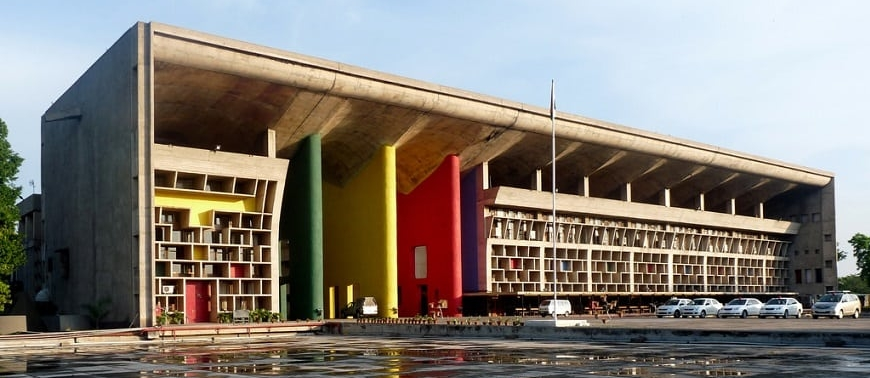
As another thought exercise, consider this: Hindus can never be denied their place in India. There is no evidence of Hindu faith facing a crisis of any kind in India. Fantastic claims of disproportionate Muslim population growth and love jihad are mere propaganda. Hindu nationalism, Hindu assertion, or whatever term you prefer, will always have a place here; the right to free speech ensures that this voice exists. But when extremist right-wing groups take over and silence minorities, a state of hegemony comes about. Telling people what they can and cannot eat, wear, watch, or speak about, or whom they can or can’t marry, amounts to imposing a homogenous culture on non-conformists. In a democracy, this is a sure recipe for conflict. Ambedkar forewarned us about this.
I feel that the idea of Hindutva, as we have received it today, challenges Hindu faith itself, which many consider a liberal, tolerant, and generous religion. Why is Hindu society largely silent to what is being perpetrated in the name of their religion against the minorities?, is a question many of us might well ask today. Recall Vivekananda’s memorable words from his 1893 Chicago address, where he said, “We believe not only in universal toleration, but we accept all religions as true,” and that he was “proud to belong to a nation which had sheltered the persecuted and the refugees of all religions and all nations of the world”. Should we not want to feel that pride always?
The Hindutva movement is marked by perpetuating victimhood, and ousting scientific temper and rationality. Ambedkar’s warning on this too was prescient. His vision of democracy emphasized that just as rationality can counter propaganda and ideological manipulation, a scientific spirit, focusing on coherent arguments and clear evidence, can protect people against the arbitrary exercise of power.
But today, physical attacks on rationalists and polemical attacks on scientific spirit are being unleashed, with Narendra Dabholkar, MM Kalburgi, Gauri Lankesh, being some who paid with their lives. Orthodoxy and superstition have made a strong comeback, surprisingly even in the Indian Science Congress. The 2023 Congress included claims that Rangolis could ward off evils. Previous editions have had a university vice-chancellor tout Ravana’s fleet of aircraft, and a palaeontologist claim that dinosaurs were created by Brahma, besides a discussion on India making test-tube babies millenia ago. Contrast this with Nehru’s vision where he encouraged Indian science beyond boundaries, to realise that the sky is not the limit.
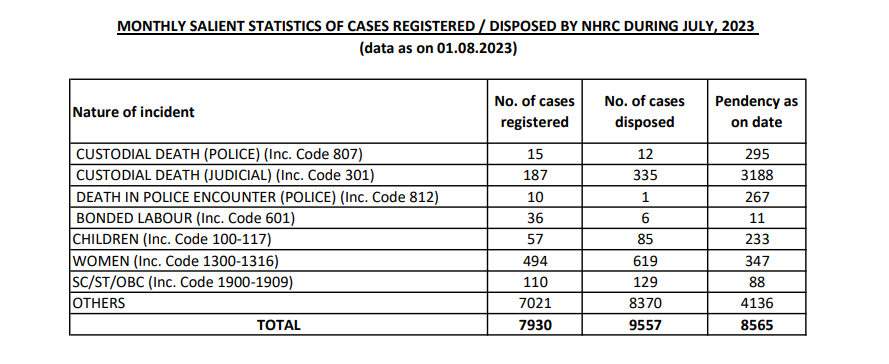
Relatedly, education is being reshaped along ideological lines, with changes galore in school and university syllabi. At Delhi University, newspaper reports suggest that, in the recently revised political science syllabus, teaching time given to thinkers like Gandhi, Kabir, Iqbal, Nehru, Ram Mohan Roy, Vivekanand, Tagore is sharply reduced, while time given to Savarkar and Hindutva ideology has increased. BJP governments tried to rewrite school history textbooks in the early 2000s. This year, they successfully removed much of Mughal history, and material on dissent and communal violence, in the NCERT Syllabi, leading expert advisors, including Suhas Palshikar and Yogendra Yadav, to seek removal of their names from the new textbooks.
Advent of Elected Autocracy
I believe that the next stage of the Hindutva movement, the birthing of the Hindu Rashtra, is firmly in the works. Madhu Dandavate, in the 2000 Borker lecture, prophetically said: “… the hardliners of ‘Hindutva’ who have a long term objective to totally subvert secular character of Constitution will … work hard even upto … 2047 to realize their objective. They will intensify frenzy among the people against secularism by whipping up hatred against religious minorities and by strengthening ‘Hindutva’ euphoria among the people and urging them to give 2/3 majority to the ‘Hindutva’ forces so that secularism can be buried.”
Today, the ruling party has acquired democratic power legitimately; after all, majority has been achieved in elections. But, having been elected, the Government is acting along starkly authoritarian lines, extinguishing the checks and balances that characterise democracy. Watchdog institutions are mostly co-opted, while outliers are so fear-struck or paralyzed that they fail to expose, much less check, the abuse of power.
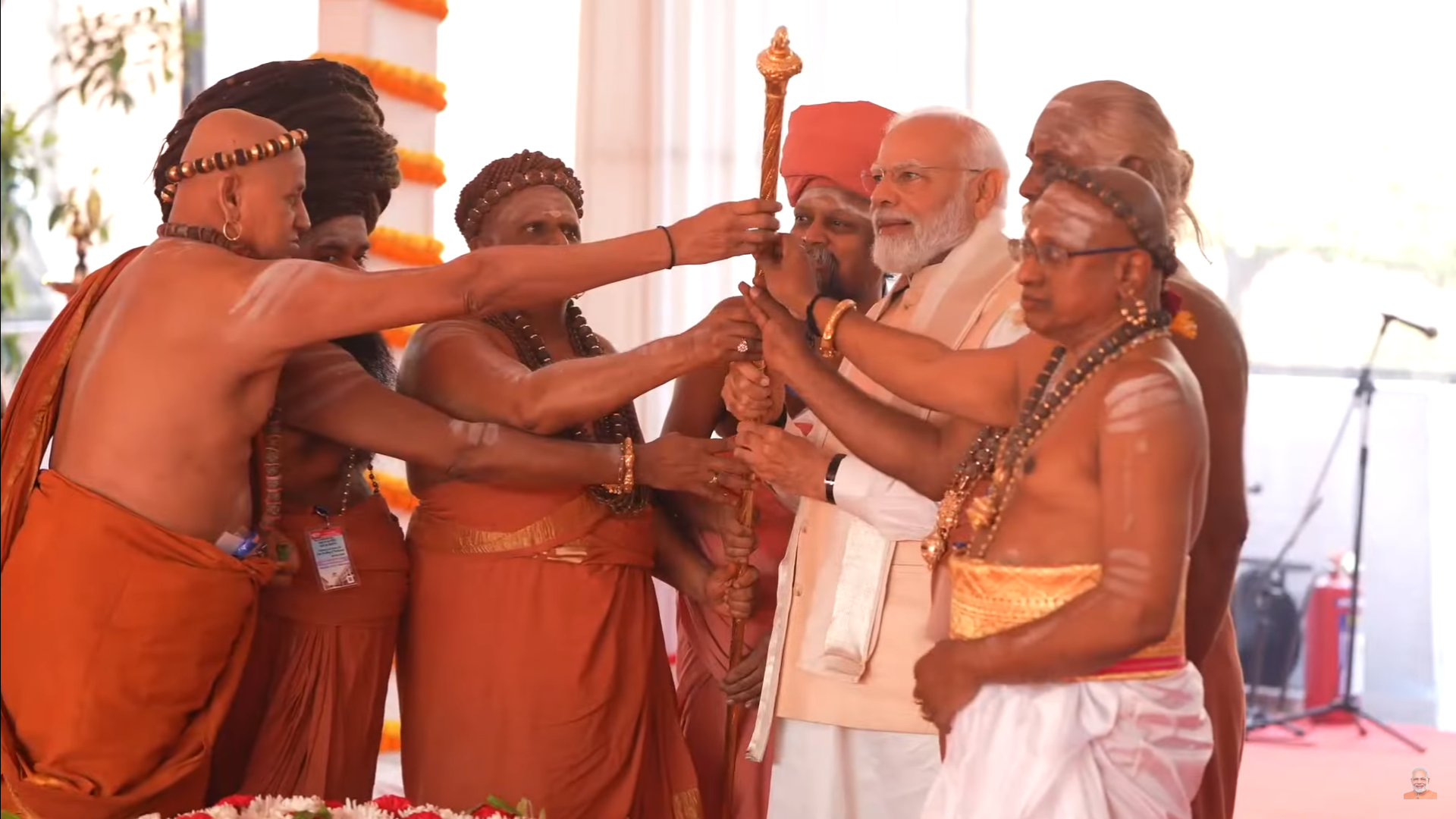
The executive dominance that was set in during the Emergency is thriving. Except this time, the issue is of “destination” – where are we going as a country? Executive power is nurturing a political culture and a majoritarian society incompatible with the Constitutional idea of India.
The question is – just because it is done through legitimate political means, is India still definitionally a democracy? I have consistently maintained that we are, in fact, becoming quite the opposite, that is, an ‘elected autocracy’, and the Indian constitution, to quote the words of legal academic Tarunabh Khaitan, is being killed by a thousand cuts. Elected autocrats weaponise institutions for political ammunition. Big media and private sector are silenced. Rules are redrafted to suit their own interests. Critical voices still rise up, but dissenters and questioners end up at the receiving end of all kinds of trouble. In this way, “the very institutions of democracy [are used]… to kill it”.
Our failed early years, we have seen, contributed to creating conditions favourable for the rise of an ‘elected autocracy’. To name a few, the almost militant social movement of the Hindutva rightwing, a hollowed out and discredited opposition, weakened media and courts, have created, in some ways, a perfect storm for the Indian state.
Today, institutions are weakened in explicit and implicit ways. We see a lack of transparency in campaign finance, through the opaque system of electoral bonds (which the Supreme Court is yet to adjudicate upon). We also see active efforts to dilute the autonomy of the Election Commission, an institution that has been blatantly partisan in recent years. The Supreme Court’s efforts to reform the Chief Election Commissioner’s selection process was undone through proposing an amendment to the selection committee’s composition, removing the Chief Justice of India, nominally, an independent, apolitical voice.
Institutions are also killed insidiously. Authorities intended to monitor accountability, such as the Lokpal, the Chief Information Commission, the National Human Rights Commission, today appear to exist only on paper. The Lokpal was created with the best of intentions, and designed to serve as an ombudsman to tackle corruption amongst public functionaries. But of the thousands of complaints it has received since it was set up, the Lokpal has either not registered the complaints at all, or dismissed them outright. What purpose does it really serve, then, one might ask. The collapse of the Right to Information regime has been perhaps even most spectacular. Meant as a sunshine law to dispel the darkness surrounding governance and policy making, this path breaking law has been virtually killed by not making appointments, or appointing loyalists, and not giving out information, while also enacting a tight fisted data protection law.
Federal relations are also being destroyed today, through partisanal Governors issuing diktats to non-BJP governed states. Separately, investigating authorities like the CBI, the ED and the NIA, otherwise expected to conduct non-partisan inquiries, are today being deployed as arms of government, against political oppositions, independent media, dissenters… These are not new tactics, but have been misused in unprecedented ways by the present dispensation.
There is also no media, print or electronic, worthy of being called truly independent, barring some exceptions. Indeed, the media has contributed to the growth of the sentiment of hatred in the country. All of these, collectively, are the markers of a failing democracy.
Closely connected to this is the clear pattern of the government suppressing dissent and criminalizing inconvenient speech and expression. Examples are countless, such as the arrest of Disha Ravi for circulating a Protest Toolkit; arrests for questioning Cow Urine as a Covid cure; criminal cases against journalists like Patricia Mukhim for criticizing the Government in a social media post; the raid on activist Harsh Mander’s premises; the arrest of standup comedian Munnawar Farooqi… Internet and communication blackouts are routine, such as during the farmer protests, or in Jammu & Kashmir, or in Manipur.
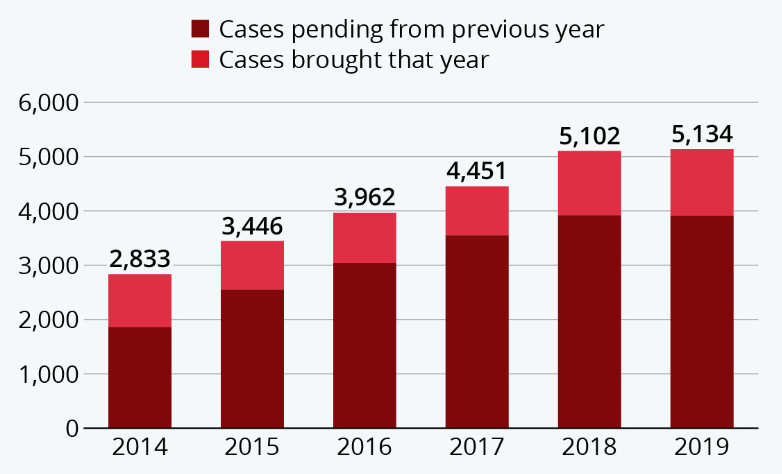
Some might argue that there are positive developments, with new laws being made, and old ones being repealed. Do not get me wrong: India desperately needs new laws. We remain reliant on antiquated laws dating back to over 150 years. But instead of actually thinking through new legal architecture, we are being given old wine in new bottles. For example, the recently introduced criminal codes – these were sprung upon an unsuspecting population, seemingly not considering the decades-long criminal law reform debate here. Bombastic statements that this is the end of the colonial legal legacy, and that Macaulay’s name now stands erased, are in fact misleading. Most of the old laws in fact continue, even retaining the same language. To complicate things, the new laws add extra layers of ambiguity and do not increase individual liberties, but reduce them, such as the provision on sedition. It strikes particularly that the home ministry, which is pushing for the new laws, believes that criminal reform simply means longer incarcerations and stricter punishments, and nothing else.
Judiciary: The Last Bastion
When it comes to courts, so much has been said that I am not even sure where to begin or end, or what to include or leave out.
In recent years, the Supreme Court has delivered some exceptional judgements, the one on the right to privacy being a pathbreaking work of jurisprudence. More immediately, there have been positive orders such as those pertaining to Manipur and Haryana, the order on Hate Speech, the bail order in the Bhima Koregaon violence case. But the judiciary has not managed to effectively curb executive excesses, and there is a visible, general reluctance to hear big ticket matters, like the Citizenship Amendment Act or electoral bonds.
This is compounded by a perceptible targeting of those fighting for justice, without following due process. Teesta Setalvad’s case is a classic example of this. Courts seem to be not only dismissing cases, but practically supporting the government in going after activists.
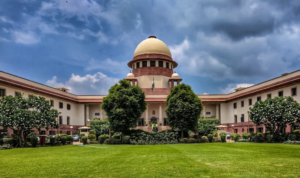
Human Rights defenders are regularly persecuted by employing anti-terror laws, and specifically the Unlawful Activities (Prevention) Act. In particular, the Supreme Court’s interpretation of the grant of bail in the UAPA cases has upended the principle of presumption of innocence under law in the case of NIA v. Zahoor Ahmad Shah Watali. Now, courts are to presume the prosecution case to be true and then determine whether a prima facie case is made out. As a result, for anyone unfortunate to have been charged under UAPA, a period of indefinite incarceration lies ahead. The UAPA has been particularly used and abused in many casse, including the Bhima Koregaon and Delhi riots cases. Some who were accused and arrested, such as Sudha Bharadwaj, were eventually granted bail, whereas others like Stan Swamy died in custody, without any incriminating evidence having been clearly identified.
It does not help that the High Courts, barring some honourable exceptions, are also unable to discharge the kind of truly independent role as they had in the past. I feel personally troubled by this, because my own professional career has been tied to High Courts. The High Courts were once the most vibrant institutions in the country. Indeed, High Courts have an enviable legacy of being among the only democratic institutions that stood with and for the citizens in the country’s darkest days during the Emergency, when the Supreme Court failed India’s people. But, like so much of history, that legacy seems to have been forgotten. On occasion, such as during Covid, and the plight of migrant workers, High Courts showed their mettle through some bold orders and directions, but it seems that this was only a momentary ray of hope. Today, it is virtually impossible to get reliefs in civil liberties cases in some High Courts, and for even the most blatantly ridiculous instances of a misuse or arbitrary application of a draconian law, individuals have to approach the Supreme Court for any redress. It is also troubling to see that judges praising the benefits of cow urine and cow dung, invoking the Manusmriti, and speaking the majoritarian language.
Despite all this, though, the executive realises that the judiciary is the last bastion it has to overcome. In that respect, without a formal change in the Constitution, it might be almost impossible to establish a Hindu Rashtra. This is also perhaps why a conversation has suddenly resumed around the Keshvananda Bharati decision. The statesmanship exhibited by the 13-judge constitution bench in Kesavananda Bharati, where the basic structure doctrine was laid down, and judicial custody of the Constitution reclaimed, is but one shining example of what the Court is capable of. The judgement spoke of six crucial elements that made up the Basic Structure and that cannot be altered, that is, democracy, secularism, rule of law, equality, federalism, and judicial independence. As the Chief Justice of India has rightly said, this decision is a “north star” for India. Granville Austin said that the Court had established itself as “the logical, primary custodian” of the Constitution, and “its interpreter and guardian.” There was a promise, decades ago, by the Supreme Court itself, that it would be the sentinel on the qui vive, the watchful guardian protecting citizens’ fundamental rights. Whatever happened to that promise, I often wonder, with great disappointment.
Conclusion
You might well ask, why I have painted what appears to be a rather grim picture of what India has become in 2023, and why I think this is important for what my vision of India is in 2047. Every day, with increasing frequency we are bombarded with claims about the achievements of the government, and how people’s lives have improved and how lives will continue to get better with time. But if we think about this rationally, with proper data, information, and evidence, we will be able to look past the pomp and rhetoric for what it really is.
Consider, for instance, the economic miracle that India is being touted as by the present government. We are told to be proud that India is now shining and that our economy will soon overtake the world’s biggest and brightest. But a closer examination reveals that this economy appears to be shining only for a very few.
In the world’s major indices that measure different aspects of governance, India regularly shows up nearer to the bottom of these lists than the top. On the Global Hunger Index, which measures hunger and food security, India is presently ranked at 107 out of 117. On the Environmental Performance index, which talks about how governments handle air and water pollution amongst other things, India has the unenvious position of being at the bottom of 180 countries measured. In the human development index, the gender gap index, the multidimensional poverty index, India has routinely performed poorly, with only marginal or occasional improvements. Not only has India done poorly compared with itself, but also compared with its immediate and larger neighbourhoods.
What does this all tell us? I feel that this march towards creating a certain kind of India, has resulted in what some have called an amnesia about the teeming millions.
The sad truth is that for many of us, the working classes, the lower middle and lower classes, the agricultural workers, they just do not exist. They are unseen, unheard or ignored, living substandard lives, left to languish in the dark alleyways, in scorched farms, in flooded hillsides, in parched villages… But if you introspect about this a little deeply, you will realise they are irreplaceable cogs in the wheel of our democracy, just like we are.
Nobody can contest that income inequality has become more stark. There appears to be no meaningful investment in the health and education of those who really need it. Corruption and crony capitalism are still very much prevalent, except with new faces and new names, perhaps more demonic than we knew them to be before.
But the situation that we are in today is not irreversible. To reverse this, we must jolt ourselves awake with a few realisations.
We need to recognise that communalism is ‘not only the badge of a backward nation’, as Nehru had famously once said, but also that it has a limited shelf life. Recall what I had said at the start of my lecture today, that history has a lot to teach us. History has taught us, time and again, that hatred and divisiveness, whether in politics or society, cannot survive for long. Religion and religious groups might be having their day in the sun, when it comes to influencing politics, and economics. This is happening the world over, but this is also only a temporary phenomenon. Peacefulness and a peaceful society is the natural equilibrium for human society. Periods of war and instability have mostly been sporadic, we have, as humankind, reverted to peace as the default. In India too, we must never let go of that certitude, that we will return to peace, sooner than later. For every statue of Gandhi or Tagore being defaced or pulled down or their thoughts and ideas being otherwise devalued by the extremist Right-wing, there is a movement that reminds us and reinforces that peace is the only path to real progress.
We must also acknowledge and learn to value the power of knowledge. This means encouraging free and critical thought AND speech. What this means for institutional architecture is obvious – schools and universities, places where people go to ideate and create, and avenues through which such ideas and creations are consumed, such as the media – must be truly independent, free from fear or control.
So, at the end of all this, you might ask, what is my vision for India of 2047? I would return, unhesitatingly, to history. The universal values that have survived since time immemorial, and that will survive for time to come, the values of truth, non-violence, compassion and kindness – these are what must define my India of 2047. These values must guide government and society, both. These must direct them to behave in ways that uphold human goodness, dignity, diversity, and inclusivity.
Over millennia, even before India existed as a nation, the people of this subcontinent have shown themselves to be very resilient. There is so much strength in India and Indians, I am confident that we can reverse the situation we have found ourselves in today.
For full video of the lecture, click here.




